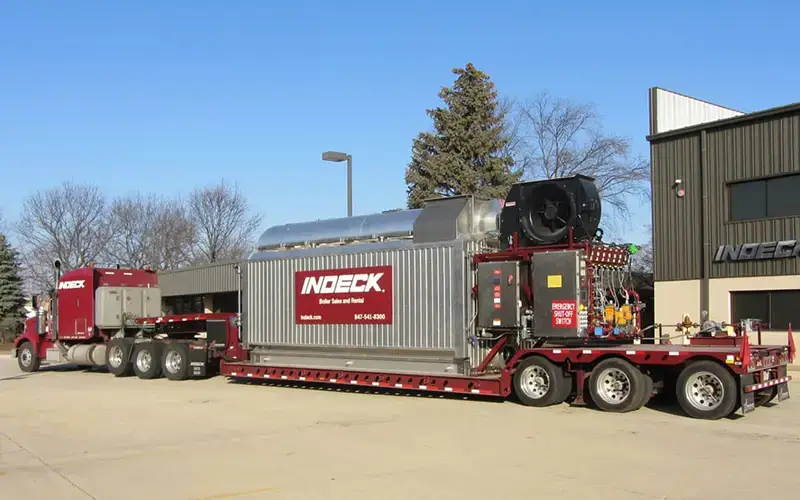Saturated Steam Boilers
Indeck, a global leader in industrial watertube boiler manufacturing and distribution, offers exceptional saturated steam boilers in both saturated and superheat steam conditions. Our reliable saturated steam boilers have been providing efficient steam solutions to industrial facilities and large commercial campuses across more than 50 countries worldwide.
For more information about our saturated steam boilers, contact Indeck today at 847-541-8300. Our team is ready to assist you with your project requirements.
What is Saturated Steam?
Saturated steam, also known as steam at its saturation point, is a term used to describe the state where liquid water and steam coexist at the same temperature. When steam loses heat and drops below the saturation point, it condenses back into a liquid form. Conversely, when more heat is applied, the water transitions back into a vapor state. Notably, regardless of its state, saturated steam maintains the same temperature throughout.
Common Applications
Saturated steam finds frequent use in heat transfer applications and situations that require heat rather than pressure for power production. Thanks to its high latent heat capacity, saturated steam serves as an effective medium for transferring heat.
Industries That Use Saturated Steam
- Universities and Colleges
- Hospitals
- District Heating
- Pulp and Paper
- Food Processing
Did You Know?
Water doesn’t always boiler at 212°F/ 100°C?
While temperature significantly influences the transition of water from a liquid to a gas state, it is not the sole determinant of boiling. Other factors such as atmospheric pressure and water purity contribute to achieving this state change. Technically, the shift from liquid water to water vapor occurs when the system has absorbed a sufficient amount of energy, preventing the water molecules from remaining in a liquid state.


Saturated Steam Pros & Cons
Due to the significant latent heat capacity possessed by saturated steam, it proves to be an extremely efficient method for transferring heat. Generating saturated steam offers a highly economical means of producing heat.
However, one notable disadvantage of saturated steam compared to its superheated counterpart is its elevated condensation rate. Without adequate maintenance and monitoring, this increased condensation can potentially lead to equipment damage over time.
Still Not Sure If Saturated Steam Is Right For You?
We’re Here to Help
For further information on Indeck’s steam and hot water generation equipment, as well as determining the ideal steam condition for your facility, please contact us or call (847) 541-8300.

